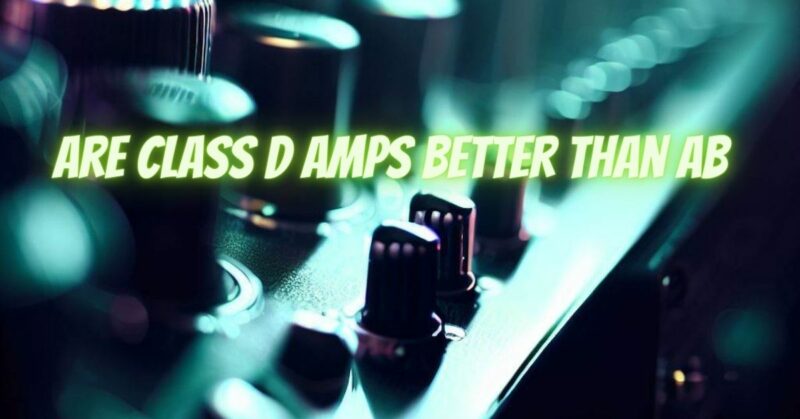When it comes to audio amplification, the debate between Class D and Class AB amplifiers has been a subject of interest among audio enthusiasts, professionals, and consumers alike. Both amplifier classes have their own unique strengths and weaknesses, making them suitable for different applications. In this article, we will delve into the key differences between Class D and Class AB amplifiers, helping you understand which might be the better choice for your specific audio needs.
Understanding Class D and Class AB Amplifiers:
Before diving into the comparison, it’s important to understand the fundamental differences between these two amplifier classes.
- Class D Amplifiers: Class D amplifiers, also known as switching amplifiers, use a pulse-width modulation (PWM) technique to rapidly switch the output transistors on and off. This allows them to efficiently amplify audio signals by modulating the width of the pulses. Class D amplifiers are known for their high efficiency, making them suitable for applications where power consumption and heat dissipation are concerns.
- Class AB Amplifiers: Class AB amplifiers combine elements of both Class A and Class B amplifiers. They operate by biasing the output transistors slightly into the conducting region, reducing crossover distortion present in Class B amplifiers. This biasing helps Class AB amplifiers deliver better audio quality compared to Class B amplifiers, especially at low to moderate volume levels.
Comparing Key Factors:
- Efficiency:
- Class D: Class D amplifiers are renowned for their high efficiency, often reaching efficiency levels above 90%. This means that they waste minimal power as heat, making them suitable for applications where energy efficiency is important.
- Class AB: Class AB amplifiers are less efficient than Class D amplifiers due to the continuous current flow through their output transistors. This results in higher power consumption and more heat generation.
- Audio Quality:
- Class D: Historically, Class D amplifiers suffered from switching distortion, which affected audio quality. However, advancements in technology have significantly improved the audio quality of modern Class D amplifiers, making them suitable for a wide range of applications.
- Class AB: Class AB amplifiers generally offer better audio quality at low to moderate volume levels due to reduced crossover distortion. They have been a staple in high-end audio setups for their ability to reproduce accurate sound.
- Size and Weight:
- Class D: The high efficiency of Class D amplifiers allows them to be more compact and lightweight than Class AB amplifiers. This makes them well-suited for portable devices and applications with limited space.
- Class AB: Class AB amplifiers tend to be larger and heavier than Class D amplifiers due to their lower efficiency and the need for more substantial heat sinks to dissipate heat.
- Heat Dissipation:
- Class D: Class D amplifiers generate minimal heat due to their efficient switching operation. This extends the lifespan of components and contributes to the reliability of the amplifier.
- Class AB: Class AB amplifiers produce more heat than Class D amplifiers, leading to potential heat-related issues and shorter component lifespans.
- Cost:
- Class D: Class D amplifiers can be more cost-effective to manufacture due to their efficiency and simplified circuitry. This makes them a popular choice for consumer electronics and budget-friendly audio systems.
- Class AB: Class AB amplifiers typically involve more complex circuitry and components, making them generally more expensive to produce.
Choosing the Right Amplifier:
The decision between Class D and Class AB amplifiers ultimately depends on your specific requirements and preferences:
- Choose Class D Amplifiers If:
- Energy efficiency is a priority.
- You need a compact and lightweight solution.
- You want an amplifier for portable devices or automotive audio.
- You are looking for cost-effective options without sacrificing too much audio quality.
- Choose Class AB Amplifiers If:
- Audio quality is paramount, especially at lower volume levels.
- You are setting up a high-end home audio system or studio monitors.
- Size and weight are not significant concerns.
- You are willing to invest in an amplifier that delivers superior audio fidelity.
The debate between Class D and Class AB amplifiers is not about one being universally better than the other, but rather about choosing the right tool for the job. Both amplifier classes have distinct advantages and excel in different scenarios. If energy efficiency, compact size, and cost-effectiveness are key considerations, Class D amplifiers might be the better choice. On the other hand, if pristine audio quality and performance are your top priorities, Class AB amplifiers are likely to be more suitable. Ultimately, the right decision depends on your specific audio needs and the context in which the amplifier will be used.


